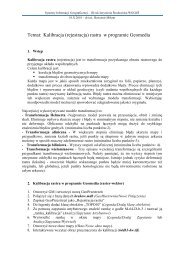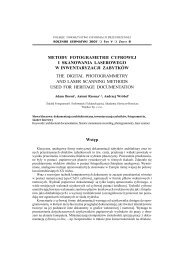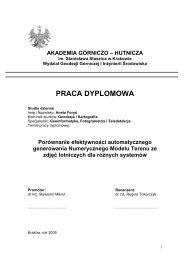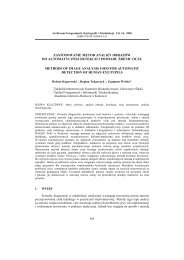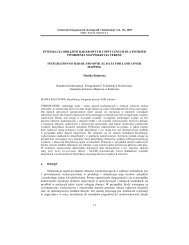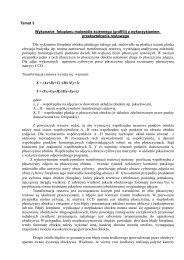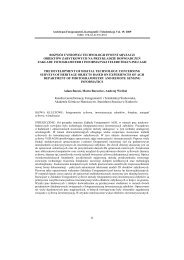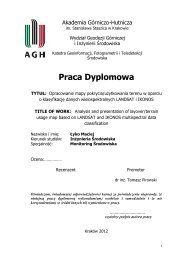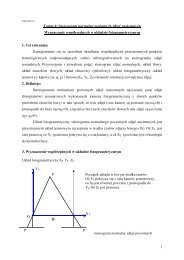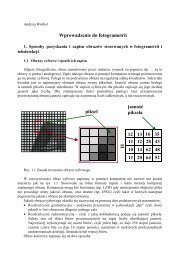Praca Dyplomowa - Photogrammetry and Remote Sensing - AGH
Praca Dyplomowa - Photogrammetry and Remote Sensing - AGH
Praca Dyplomowa - Photogrammetry and Remote Sensing - AGH
Create successful ePaper yourself
Turn your PDF publications into a flip-book with our unique Google optimized e-Paper software.
THEORETICAL BACKGROUND<br />
Figure 2.8 Exterior orientation for terrestrial photogrammetry (Luhmann et al., 2006)<br />
Matrix R of rotation for exterior orientation is a set of combination of sinus <strong>and</strong> cosinus<br />
functions of rotation angles mentioned before. Matrix X0 describes position of the camera.<br />
2.2.9 Collinearity equations<br />
These equations are the core in the photogrammetry. From these equations it is possible to get<br />
object coordinates from image coordinates (exterior orientation). These equations are also<br />
base for other computations, like Bundle Adjustment or Direct Linear Transformation.<br />
Collinearity equations:<br />
( ) ( ) ( )<br />
( ) ( ) ( )<br />
( ) ( ) ( )<br />
( ) ( ) ( )<br />
Where:<br />
x’, y’, z’ – image coordinates of corresponding points (measured on the picture)<br />
z’ – is usually equal principle distance z’=-c<br />
x’0, y’0 – coordinates of the principle point H’ in image coordinate system<br />
∆x’, ∆y’ – correction terms of the image coordinates<br />
X, Y, Z – object coordinates of corresponding points (measured on the picture)<br />
X0, Y0, Z0 – object coordinates of principle point H<br />
These equations describe the transformation of object coordinates (X, Y, Z) into corresponding<br />
image coordinates (x’, y’) as functions of the interior parameters <strong>and</strong> exterior orientation<br />
parameters of one image.<br />
An alternative form may be given, if the object coordinate system is transformed by shift to<br />
the perspective centre <strong>and</strong> orientation parallel to the image coordinate system.<br />
These equations demonstrate clearly that each object point is projected into a unique image<br />
point, if it is not occluded by other object points. The formulas effectively describe image<br />
generation inside a camera by the geometry of a central projection.<br />
16<br />
(2.8)




